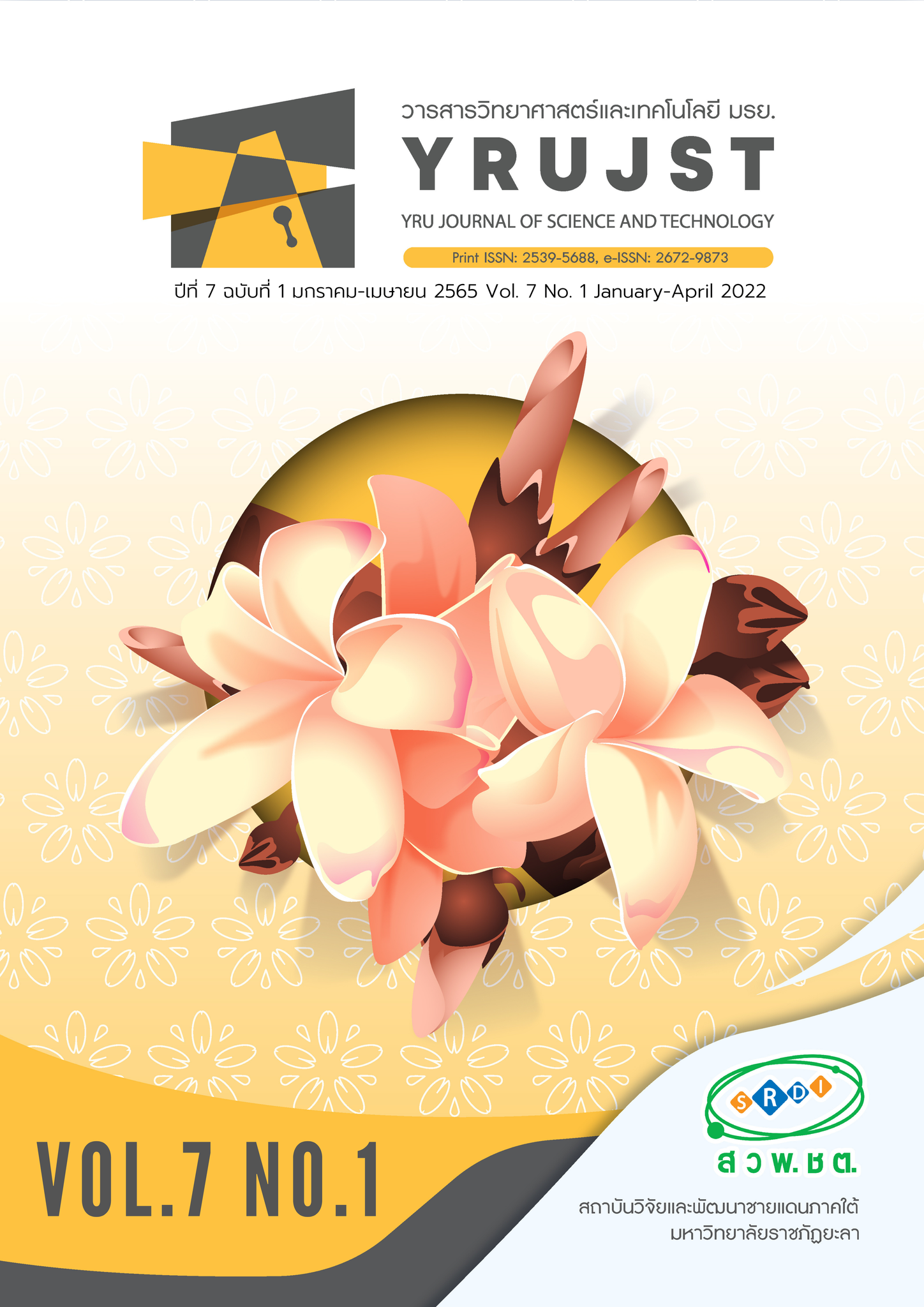Effect of Seed Coating with Streptomyces sp. CU-02 on Quality and Control Damping-Off in Chinese Cabbage (Brassica rapa, subsp. pekinensis)
Main Article Content
Abstract
Farmers usually use chemical substances to control damping-off in Chinese cabbages which cause contamination risks for farmers and consumers, as well as pollution of the environment. This research focuses on studying the control of damping-off using biological controls to replace the use of chemical substances. The antagonistic microorganisms Streptomyces sp. is used to test its efficiency in promoting growth of Chinese cabbage seeds and controlling damping-off caused by P. aphanidermatum. The test design is based on the completely randomized design (CRD) with four repetitions using five seed coating methods which are 1) uncoated seeds, 2) seeds coated with CMC mixed Streptomyces sp. CU-02 at various concentrations, which is defined as 3) 1x106, 4) 1x107 and 5) 1x108 spore ml-1/10 g. After testing the quality of Chinese cabbage seeds under greenhouse conditions, it was found that Chinese cabbage seeds coated with all levels of Streptomyces sp.CU-02 had better germination, speed of germination index; (SGI), and mean germination time (MGT) compared to uncoated seeds and seeds coated with CMC. Meanwhile, in terms of the efficiency of Streptomyces sp. CU-02 in controlling damping-off, it was found that a 1x106 spore ml-1of Streptomyces sp. CU-02 is efficient in controlling damping-off since a lower percentage of seed rot and higher percentage of healthy seedlings were found compared with other test methods.
Article Details
บทความ ข้อมูล เนื้อหา รูปภาพ ฯลฯ ที่ได้รับการเผยแพร่ในวารสารวิทยาศาสตร์และเทคโนโลยี มรย. นี้ ถือเป็นลิขสิทธิ์ของวารสารวิทยาศาสตร์และเทคโนโลยี มรย. หากบุคคลหรือหน่วยงานใดต้องการนำทั้งหมดหรือส่วนหนึ่งส่วนใดไปเผยแพร่ต่อหรือกระทำการใดๆ จะต้องได้รับอนุญาตเป็นลายลักษณ์อักษรจากวารสารวิทยาศาสตร์และเทคโนโลยี มรย. ก่อนเท่านั้น
References
Al-Askar, A. A., Rashad, Y. M., Hafez, E. E., Abdulkhair, W. M., Baka, Z. A., & Ghoneem, K. M. (2015). Characterization of Alkaline Protease Produced by Streptomyces Griseorubens E44G and Its Possibility for Controlling Rhizoctonia Root Rot Disease of Corn. Biotechnology & Biotechnological Equipment, 29(3), 457-462.
Department of Agriculture Extension. (2018). Situation Report for the Year of Plant in Chinese Cabbage [Online]. Retrieved September 20, 2020, from: http://www.agriinfo.doae.go.th. (in Thai)
ISTA. (2018). International Rules for Seed Testing. Bassersdorf: International Seed Testing Association.
Kangsopa, J. (2020). Binder Material for Seed Pelleting. Khon Kaen Agriculture Journal, 48(1), 119-130. (in Thai)
Kangsopa, J. (2020). Seed Coating with Plant Nutrients on Seed Germination and Seedling Vigour. King Mongkut's Agricultural Journal, 38(3), 417-425. (in Thai)
Kipngeno, P., Losenge, T., Maina, N., Kahangi, E., & Juma, P. (2015). Efficacy of Bacillus subtilis and Trichoderma asperellum against Pythium aphanidermatum in tomatoes. Biological Control,
, 92-95.
Miransari, M., & Smith, D. L. (2014). Plant Hormones and Seed Germination. Environmental and Experimental Botany, 99, 110-121.
Phuakjaiphaeo, C., Chang, C. I., Ruangwong, O., & Kunasakdakul, K. (2016). Isolation and Identification of an Antifungal Compound from Endophytic Streptomyces sp. CEN 26 Active Against Alternaria brassicicola. Letters in Applied Microbiology, 63(1), 38-44.
Sangkaew, P. (2013). Formulation of Streptomyces griseus subsp. formicus Biocontrol Agent for the Suppression of Rubber White Root Rot Disease. Master’s Thesis Prince of Songkla University. (in Thai)
Shen, S. K., Wu, F. Q., Yang, G. S., Wang, Y. H., & Sun, W. B. (2015). Seed Germination and Seedling Emergence in the Extremely Endangered Species Rhododendron Protistum var. Giganteum the World’s Largest Rhododendron. Flora - Morphology, Distribution, Functional Ecology of Plants, 216, 65-70.
Suwitchayanon, P., Chaipon, S., Chaichom, S., & Kunasakdakul, K. (2018). Potentials of Streptomyces rochei ERY1 as an Endophytic Actinobacterium Inhibiting Damping-off Pathogenic Fungi and Growth Promoting of Cabbage Seedling. Chiang Mai Journal of Science, 45(2), 692-700.
Winter, M., Samuels, P. L., Otto-Hanson, L. K., Dill-Macky, R., & Kinkel, L. (2019). Biological Control of Fusarium Crown and Root Rot of Wheat by Streptomyces Isolates It’s Complicated. Phytobiomes Journal, 3(1), 52-60.
Xue, L., Xue, Q., Chen, Q., Lin, C., Shen, G., & Zhao, J. (2013). Isolation and Evaluation of Rhizosphere Actinomycetes with Potential Application for Biocontrol of Verticillium Wilt of Cotton. Crop Protection, 43, 231-240.
Zacky, F. A., & Ting, A. S. Y. (2013). Investigating the Bioactivity of Cells and Cell-Free Extracts of
Streptomyces Griseus Towards Fusarium oxysporum sp. Cubense Race 4. Biological Control,


